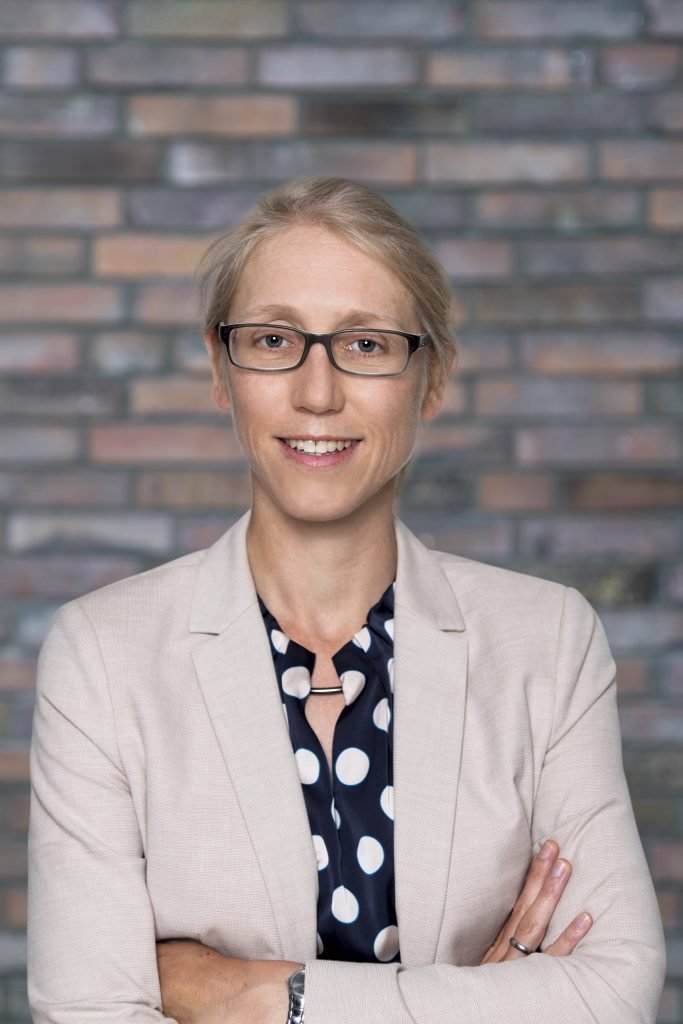Uncovering the structure of stars
Astrophysicist Saskia Hekker is the leader of the new research group “Theory and Observations of Stars” at HITS and professor in Theoretical Astrophysics at Heidelberg University. She investigates the internal structures of stars using global stellar oscillations that are visible at the surface of many stars. The joint appointment is a perfect proof for the close relationship between HITS and Heidelberg University.
What is inside the stars we see in the night sky? For a long time, we could only conjecture about the structure of a star. Nowadays, however, scientists can measure them with novel methods, such as asteroseismology. Astrophysicist Saskia Hekker studies oscillations in stars that shed light on the internal structures of stars and the changes they undergo. As of 1 September 2020, she is the leader of the new research group „Theory and Observations of Stars” (TOS) at HITS. She is also Professor in Theoretical Astrophysics at Heidelberg University and is a member of the Centre for Astronomy of Heidelberg University (ZAH). The new group will be hosted at HITS.
“Saskia Hekker is the leading asteroseismologist in Germany”, says Cornelis Dullemond, Director of the ZAH. “Her expertise represents a crucial piece that was still missing here and is a major contribution for Heidelberg to become the European hub of the field of the evolution of stars and their planetary systems.” And Gesa Schönberger, Managing Director of HITS; adds: “This joint appointment is a perfect proof for the close cooperation between Heidelberg University and HITS.” Both Saskia Hekker and Friedrich Röpke are HITS group leaders in astrophysics with professorships at Heidelberg University.
About the new HITS group leader
Saskia Hekker received her PhD from the University of Leiden (the Netherlands) in 2007. Afterwards, she worked at the Royal Observatory of Belgium and the University of Birmingham (UK). In 2011, she was awarded a personal 3-year Veni Fellowship from the Netherlands Organization for Scientific Research to conduct research at the Anton Pannekoek Institute for Astronomy (University of Amsterdam).
From 2013 on, she worked in Göttingen at the Max Planck Institute for Solar System Research, where she obtained a European Research Council (ERC) Starting Grant in the same year to determine Stellar Ages through asteroseismology. In 2014, she was awarded a Max Planck Independent Research Group focusing on ‘Asteroseismology and Galactic Evolution’.
Using these two grants, Saskia formed the SAGE (Stellar Ages and Galactic Evolution) group which became an international node of the ‘Stellar Astrophysics Centre’ (SAC), a center of excellence in research on the Sun, stars and extra-solar planets. The TOS group has inherited its SAC international node status from the SAGE group.
Observing stellar evolution
Saskia Hekker and her group aim to better understand the physical processes that take place in stars and how these processes change as a function of stellar evolution. Asteroseismic information from space telescopes combined with astrometric observations from Gaia, data from spectroscopic surveys, interferometry or photometry and state-of-the-art stellar models provides insights into the stellar structure and the physical processes that take place in stars. The TOS group focusses on low-mass main-sequence stars, subgiants and red giants. These stars are interesting as they go through a series of internal structural changes. Since they are potential hosts of planets and standard candles for galactic studies, both exoplanet studies and galactic archaeology will also benefit from an increased understanding of these stars.
About HITS
HITS, the Heidelberg Institute for Theoretical Studies, was established in 2010 by physicist and SAP co-founder Klaus Tschira (1940-2015) and the Klaus Tschira Foundation as a private, non-profit research institute. HITS conducts basic research in the natural, mathematical, and computer sciences. Major research directions include complex simulations across scales, making sense of data, and enabling science via computational research. Application areas range from molecular biology to astrophysics. An essential characteristic of the Institute is interdisciplinarity, implemented in numerous cross-group and cross-disciplinary projects. The base funding of HITS is provided by the Klaus Tschira Foundation.
